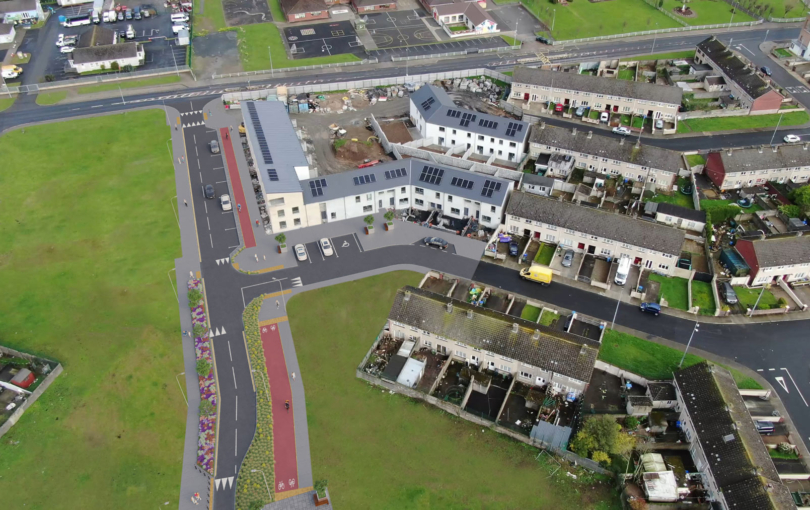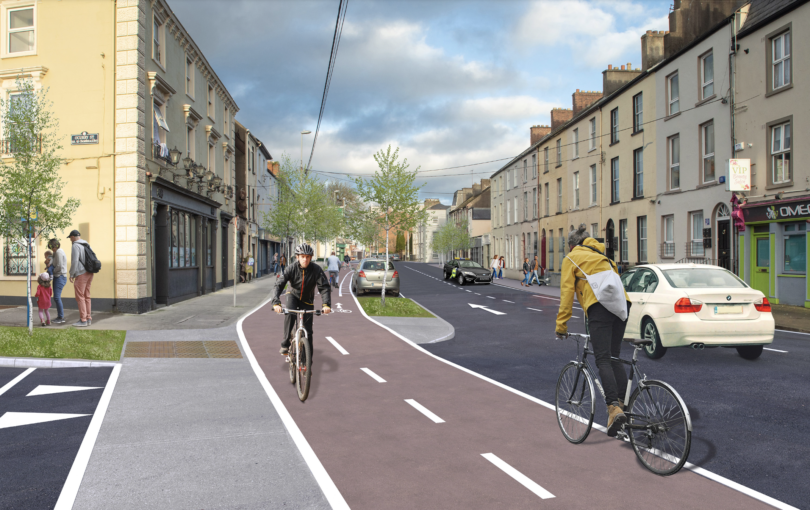
Prior to the local elections in May 2019, Limerick Cycling Campaign is asking local election candidates for their opinions on a list of actions that if enacted we believe would make Limerick a leading cycle-friendly city. This is Action 1, a call to support the development of a connected, coherent & safe utility cycling network through the creation and phased delivery of a ‘Cycling Network Development Plan’
Development of a safe, connected and coherent cycling network
To make utility cycling an integral part of Limerick’s transport network, we need a safe, connected and coherent cycling network to travel on. Limerick currently has a low number of poor quality disconnected cycle lanes dotted around different parts of the outer city. By continuing to develop cycle lanes in a piecemeal fashion we are not encouraging the growth of cycling as an integral part of the transport offering in Limerick. In order to encourage people to use bikes as an attractive and feasible alternative, we need a connected, coherent and safe cycling network to travel on. This network needs to be properly integrated, segregated from motorised traffic and permeable in terms of where it can take people on bikes.
Produce A Cycle Network Implementation Plan
In order to realise the goal of a fit for purpose cycling network, it is vital that an implementation plan is in place. The lack of a cycling network implementation plan has severely hampered the creation of a safe and coherent cycle network in Limerick. The upcoming transport strategy for Limerick city offers the perfect opportunity to create such an implementation plan. This should set out specific goals, methods, responsibilities and deadlines with regards to delivering a safe, coherent and connected cycle network for Limerick. Having such a plan in place creates a firm foundation on which to design and construct such a cycle network. Sustainability will be key to transport in Limerick going forward and having a safe and coherent cycling network in place should be a vital part of this. Without a cycle network implementation plan in place, this will be very difficult to achieve.
What other cities are doing
Numerous cities have implemented a policy of building segregated cycle lanes and this has had a hugely positive impact on traffic congestion. Ghent a city in Belgium with a similar population and climate to Limerick has recently increased the number of people accessing the city by bike by 25%, this happened just one year after introducing a new traffic plan to encourage cycling and improve the environment in the historic city core. In the Netherlands, they have started to implement Cycle Highways. The concept here is the creation of direct, coherent and permeable cycle lanes from the suburbs to city centres. The result of the creation of this cycling infrastructure is relief for heavily trafficked areas and thousands of hours in cars journeys are saved every day. Ireland’s own national policy guidelines in terms of infrastructure design outline a policy of segregation between people who cycle and other forms of motorised traffic particularly where speed limits are 50 kph and above (National Cycle Manual). It is clear from cities where cycle lane networks have been introduced that not only is there a positive impact in terms of people cycling but there are also knock-on benefits in the form of reduced traffic congestion and travel times for all road users. These benefits, along with increased physical and mental health and reduced noise and air pollution, demonstrate that implementing a safe, connected and coherent cycle lane network should be a priority for Limerick city going forward.
National Policy and Documentation on the Issue
FLOW Project (2016). The Role of Walking and Cycling in Reducing Congestion:
A Portfolio of Measures – Link to the document
This study contains numerous case studies on the positive effects of implementing cycle lane networks. In general, it found that implementing improved measures for walking and cycling (including segregated cycle lanes) lead to reduced travel times and reduced traffic congestion for all road users including people travelling by car.
National Cycle Manual – Link to the document
The National Cycle Manual refers to the importance of creating cycle lane networks that are safe, coherent and permeable in order to make travelling by bike a viable, everyday form of transport.
Limerick Metropolitan Cycle Network Study 2017 – Link to the document
Section 2.1 Subsequent to Limerick’s successful bid to be a Demonstration City for smarter travel in Ireland, Limerick City and County Council, in partnership with the Department of Transport, Tourism and Sport and the National Transport Authority have undertaken several projects to provide cycle facilities across Limerick City. The Metropolitan Area provides a mix of on-road cycle lanes, off-road adjacent cycle lanes, bus lanes permitting cyclists and green routes. These facilities, while in the most part beneficial to cycling, have been provided in a relatively piece-meal fashion and do not yet constitute a cycling network linking major trip attractors.






